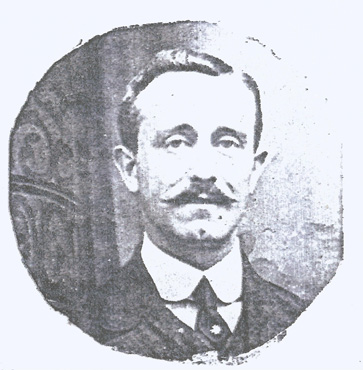Henry Lloyd
Henry Lloyd was born on 10th May 1894 in Melton. He attested in September 1914 along with another Melton man, Stanley Read. They joined the 9th (Service) Battalion, Suffolk Regiment, starting their military career under canvas at Shoreham. Owing to the poor weather however, the battalion was sent to billets in Brighton and little training took place. In March 1915, they returned to Shoreham and their training began in earnest. Mock attacks were often held at Cissbury Ring – an Iron Age hill fort near Worthing, now under the protection of the National Trust. In April, the battalion moved to Reigate and, in mid-June, to Blackdown Barracks on Pirbright Camp, Aldershot.
It was not until the end of August 1915 that the battalion received notification that they were to proceed to France. On 30th August, the 9th Suffolks sailed from Southampton, arriving in Boulogne in the early hours of the following morning. They went directly to Allette for training in preparation for the front line. On 21st September, orders came sending the battalion on as seventy-mile march to Bethune over four rain-drenched days and nights. The battalion had been promised forty-eight hours rest upon arrival, but this was not to be. At 04:00, Henry and the battalion received orders that they were to proceed to Vermelles to take part in the Battle of Loos. During the fighting, the 9th Suffolks sustained one hundred and thirty-five casualties and one man, Sergeant Arthur Saunders was awarded the Victoria Cross.
At some point, Henry was transferred to the 1st East Yorkshire Regiment, where he attained the rank of Lance Corporal. On the 1st July 1916, at the start of the Battle of the Somme, Henry and his new battalion were in trenches at Fricourt and managed to capture their first objective, Crucifix Trench and Sunken Road. They consolidated their position over the next two days and were relieved on the 4th July, travelling to Dernacourt, where they camped overnight.
Throughout July and August, the battalion was in rotation between trenches and training. On 25th September they found themselves at Guidecourt and involved in the Battle of Morval. The attack was successful but not without heavy losses amounting to two hundred and sixty men – thirteen officers and two hundred and forty-seven other ranks.
Henry Lloyd was one of the casualties and his body was not recovered. He is remembered on the Thiepval Monument to the Missing on the Somme.
